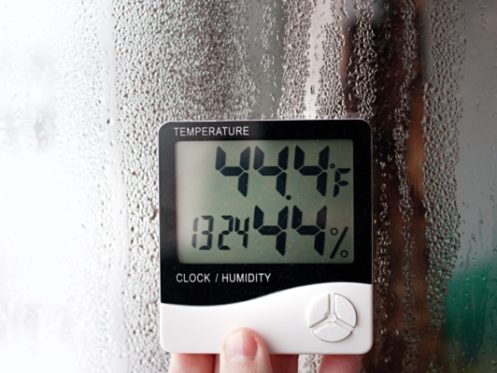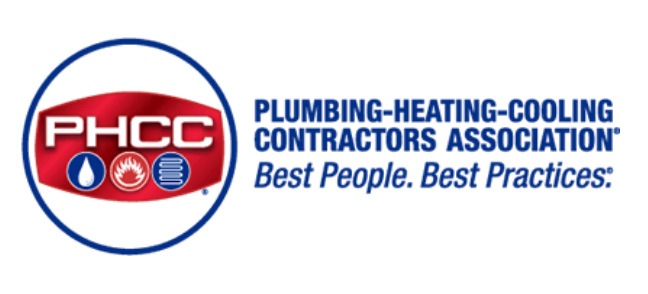Using a whole-home humidifier can make a major difference during the winter by adding moisture to the air so that your home doesn’t feel so dry. Many people in more humid climates also turn to whole-home dehumidifiers during the summer to ensure the humidity level never rises high enough to potentially create water damage and mold issues. If you find that you need both a whole-home humidifier and a dehumidifier, you may be wondering whether there is a unit that can do both, and here is the answer.
Whole-Home vs. Portable Units
You can find many different portable units that can work as both a humidifier and a dehumidifier. These units can definitely help to overcome issues with low or high humidity, but their range is usually limited to only one room. If you wanted to control the humidity level throughout the entire house, you would need to have a separate unit in almost every room or space.
Unfortunately, there aren’t currently any whole-home units that can work as both a humidifier and a dehumidifier. If you find that you need a humidifier in the winter and a dehumidifier in the summer, you will need to purchase separate whole-home units as they simply don’t work the same way.
How Whole-Home Humidifiers Work
A whole-home humidifier is tied directly into your plumbing system and works alongside your heating system to control the moisture level in the home. There are several different types of whole-home humidifiers that each work slightly differently, but most whole-home units are installed inside your ductwork to humidify the hot air that blows out of your vents. Some units produce hot, moist air while others produce cool, moist air, but the effect is the same either way.
Most whole-home humidifiers will typically run whenever your furnace does and then shut off as soon as your heating system shuts down. Still, there may be times when the humidifier doesn’t run at all or shuts off before your furnace if the unit detects that the humidity level is where it should be.
These units can be installed either in the ductwork that brings cold air into the furnace or in the supply plenum where hot air exits the furnace. Both locations will provide the same benefits and work the same way. However, it is always better to install the unit in the return duct before the furnace if possible.
The issue with installing it in the supply plenum is that it usually means that the humidifier will be located directly above or next to the furnace. Should the water line that feeds the humidifier or the unit itself ever develop a leak, the water could seriously damage or ruin your furnace or the blower fan.
There are also large standalone whole-home humidifiers that work independently from your HVAC system. These units have their own fan that circulates the warm, moist air. Some of these units can effectively manage the humidity level in an area of up to 4,000 square feet. However, the fact that this type of unit has no way to fully circulate the moisture throughout the entire building means that they are still less effective than units that work alongside your heating system.
How a Whole-Home Dehumidifier Works
Whole-home dehumidifiers are typically also installed inside your ductwork and work along with your cooling system to remove moisture from the air. Both air conditioners and heat pumps remove quite a bit of moisture from the air on their own due to the heat transfer process that they use. Inside your HVAC air handler is an evaporator coil that uses cold refrigerant from the outdoor cooling unit to remove heat from the air.
The difference in temperature between the hot air and the cold refrigerant causes much of the moisture in the air to condense into water. This water then drips off the coil and flows through the condensate drain system and then either directly out of the building or into a floor drain. In drier climates, the cooling system alone is typically sufficient to keep the building from becoming too humid. However, this isn’t always the case in more humid climates or in situations where your home has lots of air leaks due to it not being well sealed or not sufficiently insulated.
Whole-home humidifiers remove additional moisture from the air in much the same way as your cooling system does. The HVAC blower fan draws in hot air through the return duct system. This air is forced over the evaporator coil, and then a fan in the dehumidifier draws the air into the unit itself. This air is then forced over a cooler in the dehumidifier so that most of the moisture condenses into water. These units are typically connected directly to your cooling system’s condensate system so that the water can easily be drained away.
As with whole-home humidifiers, the dehumidifier will generally run whenever your air conditioning is currently running. However, you can also set the unit to run independently for those days when it is still humid but you don’t need your AC. In this situation, the blower fan on your HVAC system will still need to run to supply air to the dehumidifier.
You can easily find whole-home dehumidifiers that can work in buildings up to 5,000 square feet. Some of these units are capable of removing nearly 12 gallons of water from the air in a single day, which makes them far more effective than an air conditioner or heat pump could ever be on its own.
One of the biggest benefits of a whole-home dehumidifier is that it can help to reduce the strain on your cooling system and lower your energy costs. The more humid the air is, the harder it is for the cooling system to remove heat and the longer the system will have to run to effectively cool the building. By removing additional moisture from the air, a whole-home dehumidifier will help lighten the load on your cooling system and ensure it doesn’t need to run for as long.
How a Humidistat Works
Both whole-home humidifiers and dehumidifiers are controlled by a device known as a humidistat. The humidistat is usually mounted next to your thermostat and works to constantly measure the relative humidity level inside the building. Just like your thermostat measures temperature to signal the HVAC system to turn on and off, the humidistat also signals the humidifier or dehumidifier when to start and stop.
Depending on the specific brand and model of humidifier and dehumidifier you choose, you may need a separate humidistat for each unit. However, some brands make humidistats that can be used to control both types of units. If you have a smart thermostat, you may also be able to use this to control the humidifier and dehumidifier since many of these devices have a humidistat built in.
At Meade’s Heating and Air, we install, maintain, and repair a variety of indoor air quality units including humidifiers, dehumidifiers, air filtration systems, and UV sanitizers. We also offer air quality testing so that you can determine what your air quality is and how to overcome any potential issues. In addition, our team can help if you need any heating, cooling, water heater, ductwork, or gas line services. To schedule any HVAC or air quality service in the Sterling, VA area, give us a call today.




